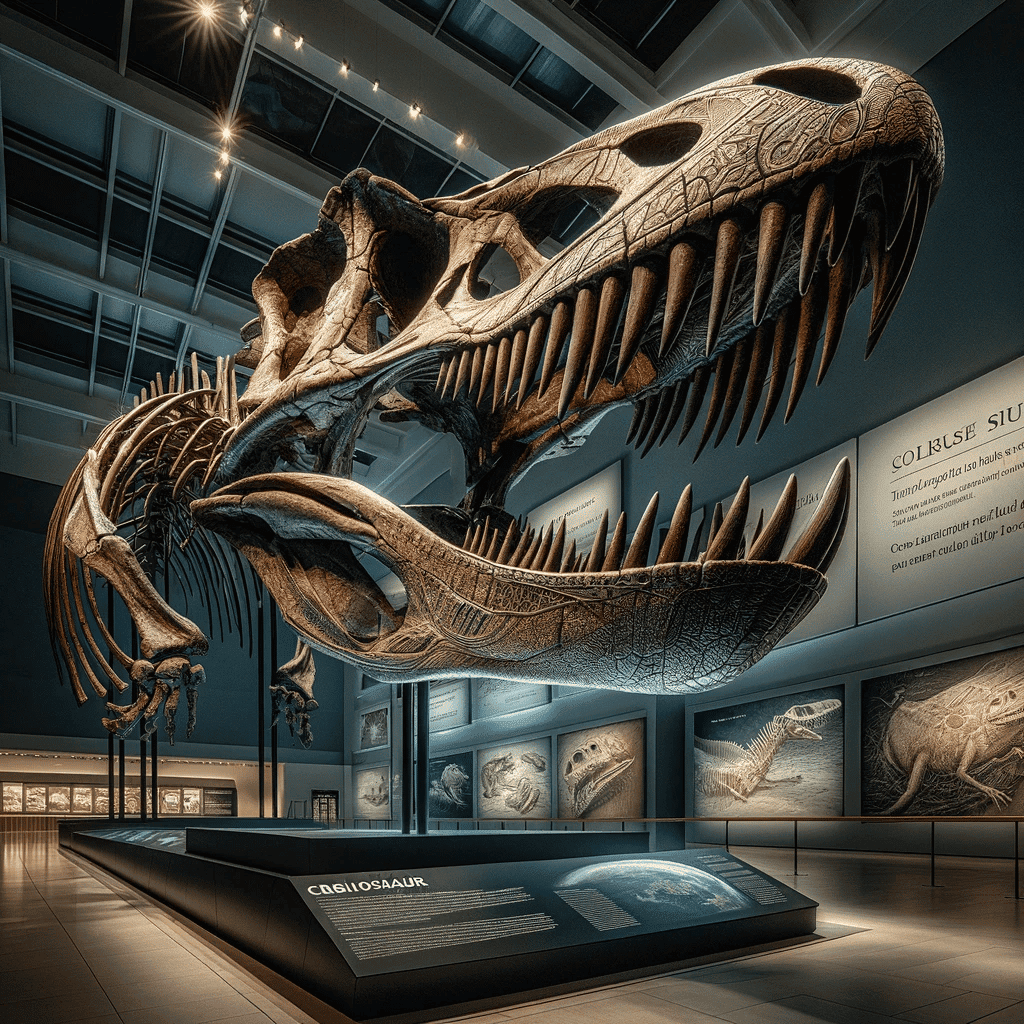The discovery of a colossal pliosaur sea monster dinosaur skull has captivated the scientific community and ignited the public’s imagination, providing a rare window into the life of these ancient sea monsters. Pliosaurs, part of the broader group of marine reptiles known as plesiosaurs, roamed the world’s oceans during the Late Jurassic period, approximately 150 million years ago. This particular skull, remarkable in size and preservation, offers unprecedented insights into the physiology, behavior, and ecology of these formidable predators.
The Pliosaur
Measuring an astonishing length, the skull is a testament to the sheer size these creatures could attain. Pliosaurs were apex predators, with a reputation for their immense power and predatory prowess. This skull, with its massive jaws and formidable teeth, clearly belonged to an individual at the top of its food chain. It sheds light on how pliosaurs might have hunted, overpowering large prey with a combination of brute strength and razor-sharp teeth.
The skull’s state of preservation is remarkable, allowing scientists to analyze details that are often lost in fossilization. The intricacy of the bone structure, visible scars, and other markings provide clues about this individual’s life, including possible combat scenarios with other marine reptiles or injuries sustained while hunting. Such findings help paleontologists piece together a more dynamic and detailed picture of the marine ecosystems of the Jurassic period.
Additionally, the discovery has implications for understanding the evolution of marine reptiles. Comparing the skull’s features with those of other known pliosaur fossils can reveal how these creatures adapted to their environments over time. For example, the size and shape of the skull and teeth can indicate changes in diet and hunting strategies, reflecting shifts in prey availability and competition with other marine predators.
Geography
The skull also raises intriguing questions about the geographic distribution and diversity of pliosaurs. Given the vast distances these creatures likely traveled, this discovery could provide evidence of previously unknown migration patterns or habitat preferences. This, in turn, helps scientists reconstruct ancient marine routes and understand the global distribution of marine life during the Jurassic period.
Beyond scientific circles, this sea monster dinosaur skull has captured public interest, illustrating the enduring fascination with prehistoric life. It serves as a reminder of the incredible diversity and scale of ancient creatures, many of which remain shrouded in mystery. Exhibitions and reconstructions based on this skull can inspire new generations of paleontologists and enthusiasts, sparking curiosity and a desire to understand our planet’s prehistoric past.

Conclusion
This discovery of this colossal pliosaur sea monster dinosaur skull is a significant milestone in paleontology. It not only provides invaluable information about these ancient sea monsters but also opens new avenues for research and public engagement with our planet’s rich prehistoric heritage. As scientists continue to study this remarkable find, it is sure to yield more secrets from the depths of our planet’s ancient oceans.
Up next:
Dinosaur Nesting Site Uncovered
Dinosaur Tracks Revealed In Texas Due to Drought
Discover the Fascinating World of Long-Neck Dinosaurs
Join our Forum for free today!

- The Kleptomaniac Cat That Rules Houston - July 20, 2024
- Elephant Makes a Lifelong Friend at Sanctuary in Tennessee - July 14, 2024
- Evidence For World’s Oldest Fossilized Forest Discovered in New York - July 11, 2024

